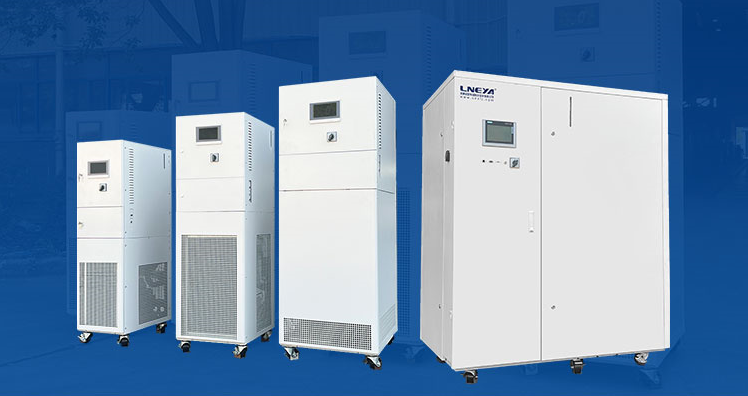Precautions for use of cooling and heating circulators
The cooling and heating circulator is a cooling and heating temperature control device that cooperates with various types of glass reaction kettles, double layer reaction kettles, reaction kettles, extraction equipment, and other devices to achieve simultaneous operation of cooling and heating.
- Regardless of whether the cooling and heating circulator is air-cooled or water-cooled, the temperature control device should be located in an operating environment with sufficient fresh air: the surrounding space is greater than 30 cm.
2. When selecting the heat transfer medium for the refrigeration thermostatic circulator, it is necessary to pay attention to whether its temperature limit, ignition point, viscosity, freezing point, etc. meet the requirements, and whether it is suitable for the use of the internal pipes of the instrument.
3. When selecting the heat transfer medium pipe for cooling and heating the circulator, the length should be as short as possible and the diameter should be as large as possible. If the diameter is too small, it may cause the speed to slow down. Do not use water as a heat transfer medium.
4. Improper heat transfer media for cooling and heating the circulator can have a negative impact on the instrument and equipment, and may cause damage to the equipment. Therefore, within the specified pressure range, only the heat transfer medium specified by the manufacturer Guanya Refrigeration can be used.
5. When controlling the temperature of a cooling and heating circulator, it is necessary to quickly and effectively compensate for heat absorption and release in chemical reactions. When selecting a suitable temperature control system, various conditions and influencing factors need to be comprehensively considered.
6. Most temperature control applications will involve stainless steel, glass reactors, and other reactors. Stainless steel reactors are more durable, while glass reactors allow users to observe the reaction process in the reactors. For glass reactors, many factors need to be considered for the safety of applications.
 LNEYA Chillers
LNEYA Chillers





HelloLog in